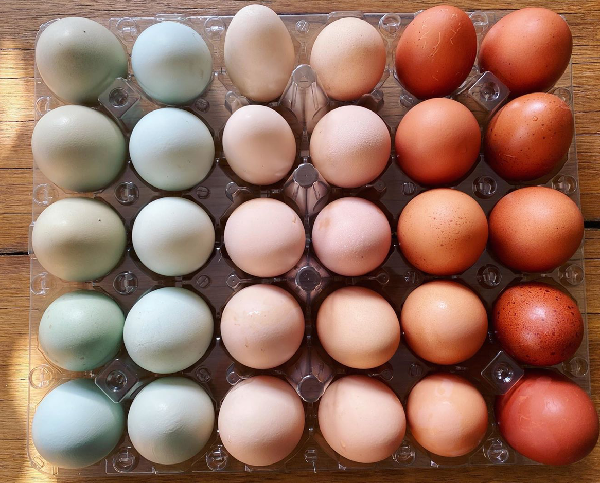
Eggs are a staple in many diets around the world, but few people stop to consider the variety in their appearance. The color, shape, and shade of eggs are influenced by a myriad of factors, ranging from the breed of the hen to the conditions under which they are laid. This article explores the fascinating science behind these differences.
Egg Color: Genetics and Pigments
The color of an egg’s shell is primarily determined by the genetics of the hen. Different breeds lay eggs in a range of colors, including white, brown, blue, and green. The pigments responsible for these colors are deposited onto the shell during its formation in the hen’s oviduct.
Protoporphyrin IX: This pigment is responsible for brown shades and is derived from hemoglobin. It’s deposited onto the eggshell during the last few hours of its formation.
Oocyanin: A byproduct of bile production, this pigment gives eggs a blue or green color. Unlike protoporphyrin, oocyanin is integrated throughout the shell, not just on the surface.
White Eggs: These eggs lack significant pigment deposition, resulting in their white color.
Brown and white eggs are the most common in supermarkets, but blue and green eggs are increasingly found in specialty stores, thanks to breeds like the Araucana and Ameraucana.
Egg Shape: Species and Nesting Behavior
The shape of an egg can vary widely among bird species and is often adapted to the bird’s nesting habits and environment.
Elliptical Shape: Most common in hens, this shape helps eggs roll in a circle rather than in a straight line, which prevents them from rolling out of the nest.
Pointed Ends: Some bird species, like shorebirds, lay eggs with one end more pointed. This adaptation helps the eggs fit snugly together in a nest, conserving heat and space.
Spherical Shape: More common in cavity-nesting birds, this shape ensures that the eggs can be closely packed to maintain warmth.
The structural integrity of an egg is also a factor in its shape. The elliptical form provides a good balance between volume and strength, making it less likely to break under the weight of the hen.
Egg Shade: Diet and Environment
The shade of an egg, including variations in the color intensity, can be influenced by the hen’s diet, health, and environmental conditions.
Diet: Certain foods can affect eggshell color. For example, hens fed a diet high in maize may lay eggs with a deeper brown hue due to the pigments in the corn.
Health and Stress: A hen’s overall health and stress levels can influence eggshell pigmentation. Stress can lead to lighter-colored eggs, as the hen’s body may not deposit pigments as effectively.
Environmental Factors: Exposure to sunlight and temperature can also affect eggshell color. Hens exposed to more sunlight tend to lay eggs with more intense pigmentation due to increased vitamin D production.
The Role of Calcium in Shell Quality
Regardless of color, shape, or shade, calcium plays a crucial role in eggshell quality. Hens require a diet rich in calcium to produce strong shells. Insufficient calcium can lead to thinner, weaker shells, which are more prone to breaking.
The diversity in egg color, shape, and shade is a result of complex interactions between genetics, diet, environment, and species-specific adaptations. Understanding these factors not only adds to our appreciation of this everyday food item but also highlights the intricate connections between an organism and its habitat. Whether it’s a brown egg from a Rhode Island Red or a blue egg from an Araucana, each egg carries the story of its hen’s biology and environment.







